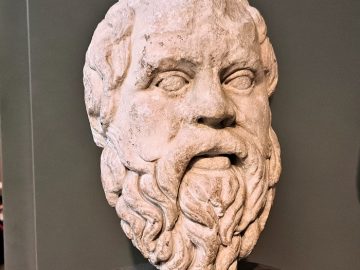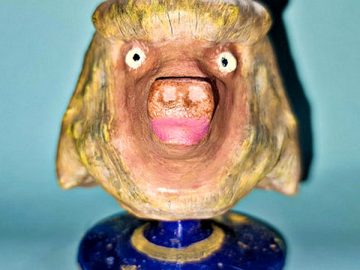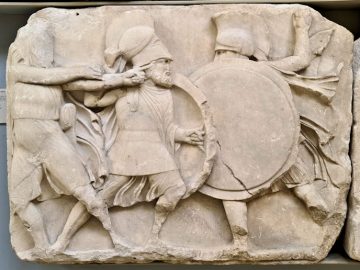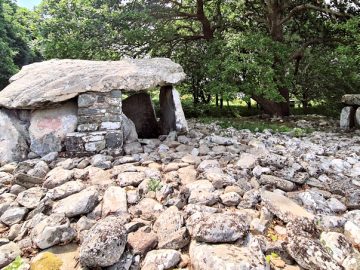There are many wonderful displays in Welsh museums. And, many of them represent the exciting years of the Welsh industrial revolution and the growth of workers rights movements, particularly in the south of Wales. One of them is a bust of John Frost in Newport Museum and Art Gallery, aptly just off John Frost Square in Newport, South Wales. John Frost was one of the leaders of the Chartist movement in Victorian South Wales, fighting for the rights of common people to vote and stand for parliament. After the Chartist uprising in Newport in 1839 he was arrested and, with the other two Chartist leaders, was the last person to be sentenced to be hanged, drawn and quartered in Britain. So obviously the possibility of making a 3D scan, for 3D printing, of such an important historical Welsh figure resulted in a project I couldn’t resist having a go at.
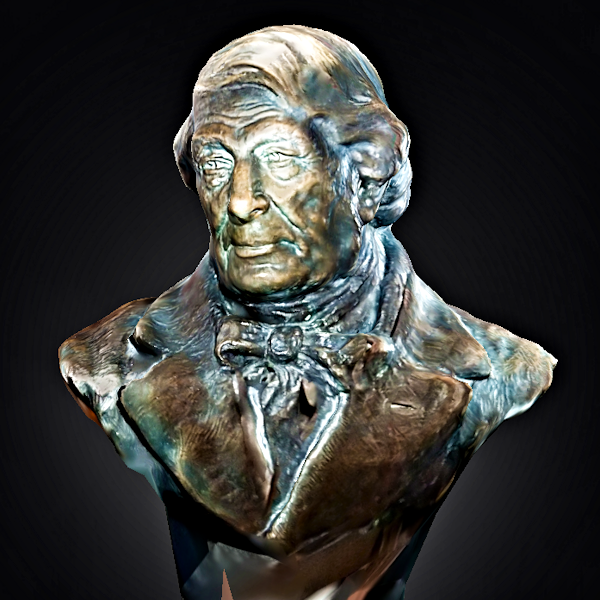
Quick summary of this 3D creation
Overview: A basic scan of the bust of Chartist John Frost in Newport Museum and Art Gallery.
Location: Newport Museum and Art Gallery, Newport, South Wales, United Kingdom [map].
Date/era: Unknown, probably late 20th Century.
Software used: Sony 3DCreator Android app, OpenSCAD, Meshmixer.
Intended use: 3D printing, either in resin or, for larger sizes, fused filament.
Fortunately the sentence was later reduced to transportation for life due to a public outcry. Much later he was also pardoned and eventually returned from Australia, via the United States, to live his later life near Bristol. He lived to the grand old age of 93 before eventually succumbing to death in 1877. So overall he was a big part of history around the growth of democracy in the UK, as well as being a very important part of the history of the City of Newport. You can read much more about him on Wikipedia: click here to visit their John Frost page. And if you’re a fan of Jasper Fforde’s excellent books you might also recognise John Frost as the fictional father of the Socialist Republic of Wales.
The scan was made with the Sony 3D Creator app on an Xperia XZ1 Compact smartphone, which did a good job albeit with loss of fine details. It was a very challenging scan, as the surface is very dark and there is only low light above the bust. In fact, it took me three attempts, on separate visits to the museum, to accomplish the final version. For that final trip I added a small video light to my phone, to ensure there were no areas too dark for photogrammetry to pick up features. I was a bit worried that would create false features as the light moved, but I was pleasantly surprised to end up with a scan usable for creating a good 3D print. The scan was then post-processed using Meshmixer to remove extraneous areas and to remesh to a sensible file size. You can see the finished model on Sketchfab below (click the play button to load the model and view it in 3D).
Finished 3D prints can be seen in the photo below, the busts being printed with standard UV-curing resin in a Monoprice Mini SLA printer. Given that there is some detail in the face that I didn’t want to lose, and I wanted a small size print, resin printing was the obvious method in my mind. And, I wasn’t disappointed by the finished print the Mini SLA printer gave me: I think it reproduced the solemn but friendly look of John Frost’s face very well. However, there’s really no reason why you shouldn’t use fused-filament printing if you prefer, although there are some overhangs that will require use of support material if you do. If you want to try 3D printing it yourself, click here to go to the MyMiniFactory page to download it.
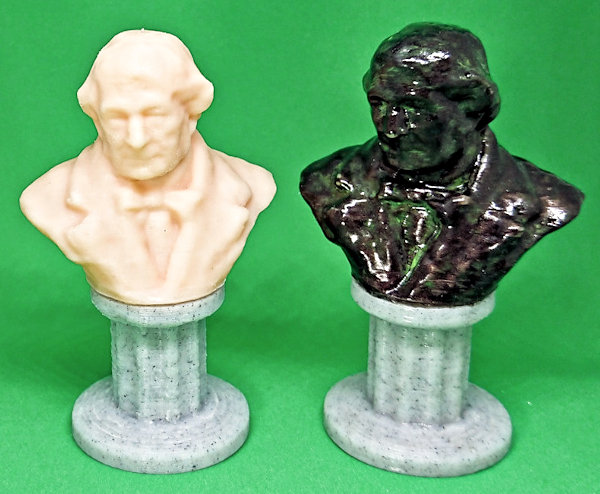
The pedestals were created using simple OpenSCAD code based on cylinder primitives, and designed not to need support material when printed slowly at small layer heights (or, depending on your printer, we can at least say ‘with minimal support material’). The cutouts around the pillar part were made using the OpenSCAD difference() operator, with a circular array of cylinders with a small radius. And the slightly rounded look at the pillar ends were created using a sphere primitive, scaled on the Z azis, using the OpenSCAD union() operator. For this kind of stand OpenSCAD excels, because often the shapes are easily created with primitives, and so with minimal code. They were printed in marble-effect PLA using a Monoprice Mini printer which I think did a good job of giving the pedestal a marble effect suitable for the bust of this important Welshman.
The painted version, on the right in the photo above, was done using a couple of coats of Humbrol bronze-effect model paint. As it has very fine metallic flakes in a dark medium, I find the Humbrol bronze to be very good for reproducing the look of many sculptures. However, to add more of a feel of bronze, I also used a little Pebeo green craft acrylic paint in the creases, to replicate oxidised metal. I find that helps as otherwise the bronze-painted surface can look a bit uniform and samey. The painted 3D print was then given a coat of Pebeo craft varnish to try to hide the shine of the Humbrol bronze a little: which wasn’t completely effective, but without strong light it looks quite good in my humble opinion.
So finally, in case you’d like to use the methods in this project for your own work, let’s recap on what was involved:
- The Sony 3DCreator Android app was used to create a basic 3D scan on a smartphone, which provided a good representation albeit with loss of sharp edge details.
- On a PC Meshmixer was used to cut away unwanted material and solidify/remesh the model to achieve a much smaller file size.
- The finished 3D model was then test printed in resin, and found to print to an acceptable quality.
- As there isn’t an enormous amount of detail in the bust, fused-filament printing should also do a good job, especially for larger prints.
- A pedestal was made in OpenSCAD for the bust to sit on, and printed in marble-effect PLA filament.
Please note that this scan is provided without any license for commercial use. It is intended simply as a historical model you can have the fun of printing yourself that advertises this work of art. And of course it is intended to be a motivation for you to visit Newport Museum and Art Gallery yourself to view the bust of one of Wales’ famous Chartist leaders and rights activist: click here to see the location in Google Maps.

